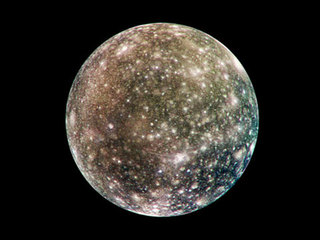*This post may contain affiliate links. This means we may make a commission if you purchase an item using one of our links*
USA is the third largest country on Earth and forms part of the North American continent while Callisto is the third largest moon in the solar system. Callisto has a surface area of 73 million sq. kilometers and a volume 59 billion cubic kilometers whilst Callisto is far smaller with a surface area of 9.88 million sq. kilometer and a volume of 393.3 million cubic kilometers.
For a more thorough breakdown of what makes both USA and Callisto as big as they are, continue reading as it will be covered in more detail below.
How Big Is USA?

The United States Of America has a total surface area of 9,833,516 sq. km, which makes it the third largest country in the world. It has a surface twice the area of the European Union’s land, and it is larger than the 107 smallest countries in the world combined.
The largest state in the USA is Alaska, possessing a surface area of 1,070,000 sq km; Texas and California follow at 430,000 sq km and 260,000 sq km, respectively.
These areas represent a flat two-dimensional area, but if we want to compare the size of the USA and Mars, then we need to know the volume.
Earth’s crust ranges from around 5 to 70 km in thickness. Generally, this crust is thicker under the continental land, which averages 40 km. Taking this average and multiplying it by the surface area of the USA, we can calculate that the rough volume of the USA is around 393,340,640 cubic kilometers.
This might sound like a lot, but it still falls short of a variety of other celestial objects where for example the Moon that has 21.9 billion cubic kilometers of volume. Even if we take Earth’s crust at its thickest (70 km), the total volume of the USA is still not comparable to most celestial bodies in outer space.
The actual crust will vary as USA is a diverse country with dramatic variances in terrain. This country’s three most significant mountain ranges are the Appalachians, the Rockies, and the Sierra Nevada which adds altitude to its overall size but, it isn’t so as to make a major difference in the surface or volume of the country as a whole.
How Big Is Callisto?

Callisto is a moon of Jupiter and the third largest moon in the Solar System, which was discovered in January 1610 by Galileo Galilei.
The diameter of Callisto is 4,820.6km, while its surface area is 73,000,000 sq. km, a far greater expanse than that of the United States. Still, like our seventh largest country, the terrain of Callisto varies, and it is the most heavily cratered object in our solar system.
Calisto’s volume is an impressive 59,000,000,000 cubic km, giving it a similar size to the planet Mercury (60.8 billion cubic km). Callisto is classified as a moon and not a planet because it orbits Jupiter rather than the Sun. Still, it is one of the largest moons in the Milky Way and covers an impressive expanse.
This mega moon is 99% as big as Mercury, but it only possesses a third of its weight because of the moon’s mixed composition.
Callisto’s average density is 1.83 cubic cm, which suggests that it is made of roughly equal parts of water ice and rocky material, plus additional volatile ices (like ammonia). Scientific research into the moon suggests that 49-55% of its total constitution is ice. The remaining rock is likely composed of silicates, chondrites, and iron oxide.
Still, the water ice only accounts for between 25 and 50% of the planet’s overall mass.
The surface of Callisto is heavily cratered and has a dark appearance. Scientists believe that the bright patches consist mainly of ice, while the darker patches show areas where the ice has eroded. The most distinctive crater is Valhalla, with its bright central region.
In the past, many scientists thought this huge “hunk of rock and ice” was “boring” because it had no shifting tectonic plates and no volcanic activity. At first appearances, it seemed to be a dead world.
Still, more recent research by NASA scientists concludes that Callisto could house a salty ocean interacting with rocks that are more than 250 km below the surface. Combine this with detections of oxygen in the exosphere, and today Callisto is included in the list of places where life could exist beyond Earth.
Callisto is 180 times farther from Earth than our moon, but its large amount of surface ice makes it shine brighter than our moon. Earth’s moon reflects only 0.12% of the Sun’s light, whereas Callisto reflects up to 20%.
Summary
Even if USA is the third biggest country on Earth, it is still a flat mass body whereas Callisto is spherical where in regards to surface area Callisto is 7 times more and In regards to volume it is more 160 times USA’s volume. Therefore, when all metrics are taken into account, Callisto is far and away the bigger of the two bodies.

